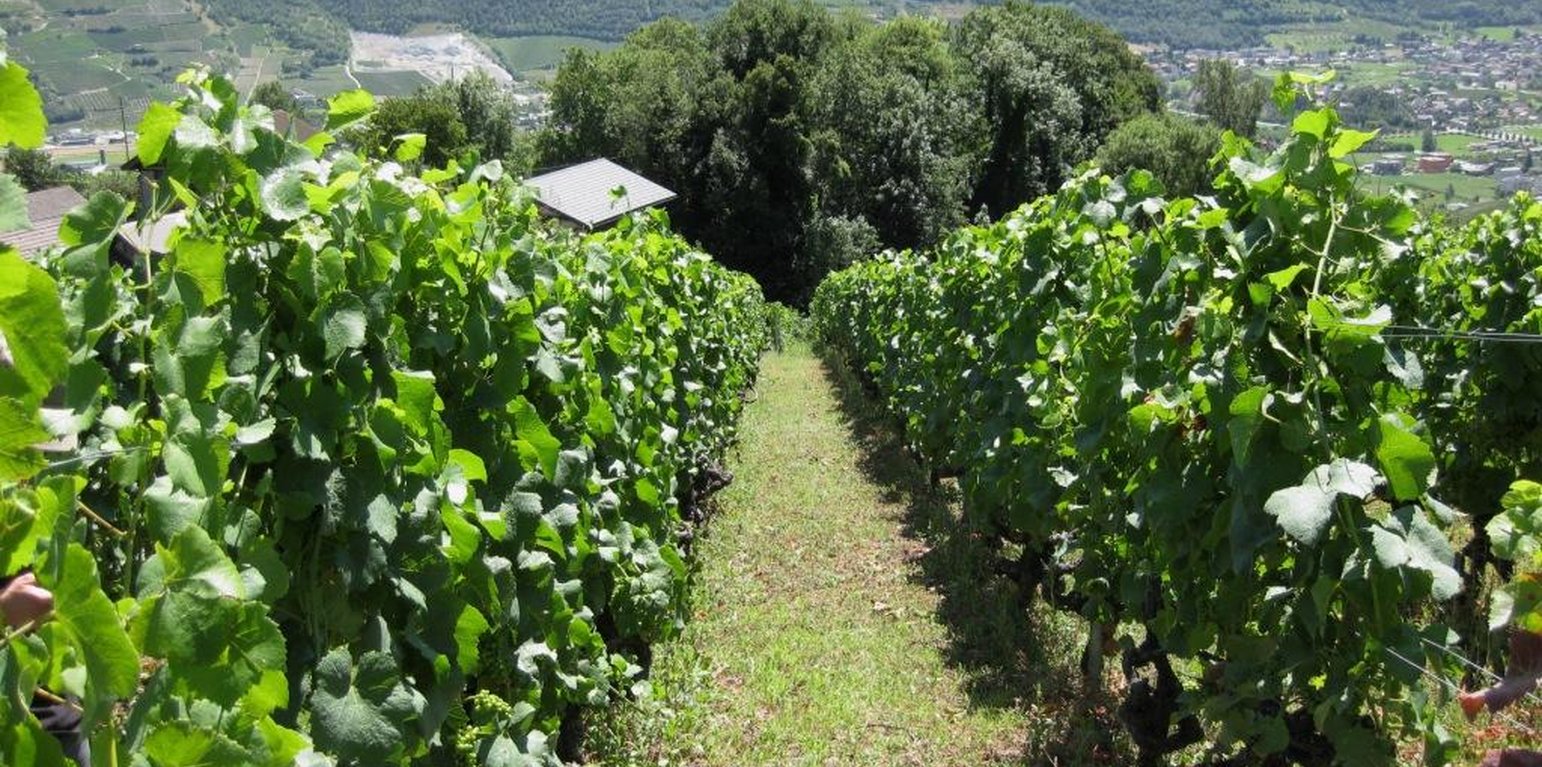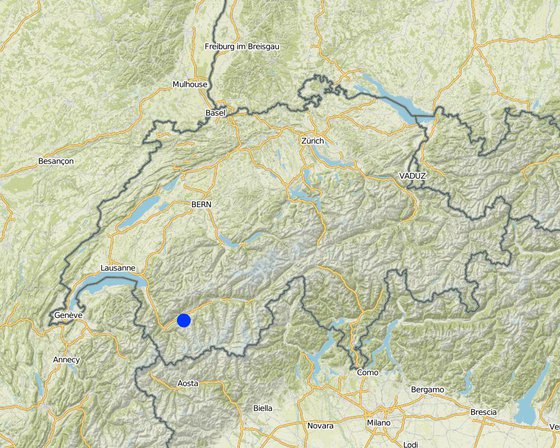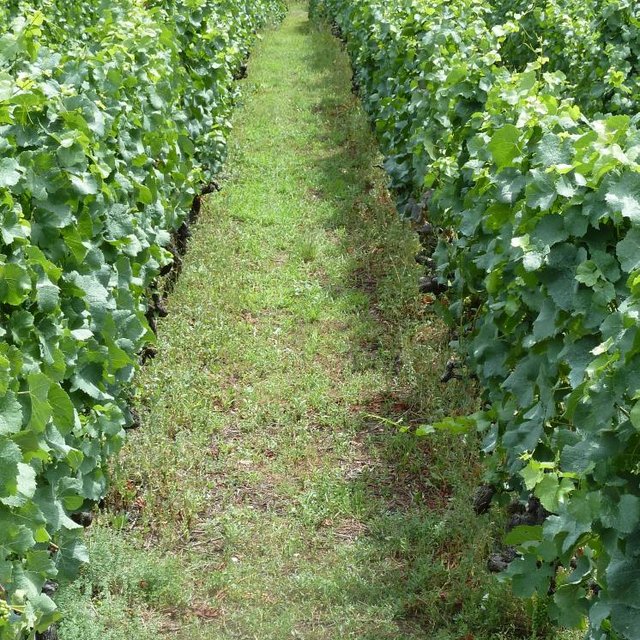



A natural grass cover is left to develop in the vineyard. This should only be done once the vines are at least 4-5 years old because if done earlier, competition for water can negatively impact growth of the young vines. During the first years certain weeds are removed manually or through the targeted local application of herbicides. After a diverse grass cover has developed no herbicides are used in the vineyard anymore. There is no additional mulching applied, however, all the leaves and branches shed by the vines are left in the plot to decay and to replenish soil organic matter. In addition, the skins of grapes that remain after pressing are spread out on the plot as an organic fertilizer. In terms of inorganic fertilizers, potassium and magnesium are regularly applied to the vines. In some cases also nitrogen has to be applied because of competition for nitrogen between the vines and the grass cover, but this is avoided if possible. Wine quality can suffer from nitrogen insufficiency as it is needed for the fermentation process. Irrigation via a sprinkler irrigation system installed in the plot is only used during the establishment of the young vines. Later, no irrigation is used any more.
Purpose of the Technology: The main purpose of this technology is to reduce the use of herbicides, to improve soil structure and to promote an increase in biodiversity. A positive impact on reduced evaporation could not be confirmed by the land user as according to him, competition between the grasses and the vines for soil moisture is high. From the researcher’s point of view, the longer roots of the vines compared to those of the grasses should allow the vines to take up moisture from deeper layers and therefore the grass cover should at least have some positive effect on soil moisture. As soil erosion is not an important issue in this area, contrary to other vine producing areas in Switzerland, soil stabilisation is not a major purpose of this technology. However, the grass cover is naturally contributing to soil stabilisation which might still have a positive effect in the case of heavy rainfall events.
Establishment / maintenance activities and inputs: The choice of the plot on which grass cover should be established requires very high knowledge of its condition as on very dry soil there will be increase competition for water. Establishment activities are quite simple as the establishment of the grass cover is completely natural with no seeds added by the land user. Only during the first years of establishment, if needed, some contact herbicides are applied locally to prevent very common and aggressively spreading plants such as the dandelion (Taraxacum officinale) to spread and to impede the establishment of more rare species. In terms of maintenance the grass cover has to be cut. The frequency of cutting depends on the weather but is generally done about every 4-6 weeks. Cutting is alternating between lines in order to always retain seeds for reproduction within the system. The cutting is alternated between rows so that there is always a well-developed cover in at least part of the vineyard. Grass cutting is mechanised with specialised machinery needed to fit in between the vine rows. Because of the need for cutting this technology requires more labour than the common system used for vine cultivation (application of herbicides).
Natural / human environment: The hamlet of Valencon is situated on the right side of the Rhone River, in the central part of the Canton of Valais, in South-western Switzerland. The vineyard is located on a south facing slope at an altitude of about 700 m.a.s.l. The climate in the Rhone Valley is the driest in the whole of Switzerland with only about 500 mm of annual rainfall.
Because of increased labour need the farmer transfers the increased investment onto the price per bottle of vine. This is possible because the whole transformation process including sale takes place on farm. His mainly private customers are willing to pay a price premium for integrated production using less herbicides.
Although the interviewed land user is aware of around 10 other land users that have applied the technology, the spread of this technology is limited by the difficult topography which does not allow for mechanization in every case. It is also limited by conservative views about what a proper vineyard should look like (no grass in between the vines).

Location: Valençon (Chermignon), Valais, Switzerland
No. of Technology sites analysed:
Spread of the Technology:
In a permanently protected area?:
Date of implementation: 10-50 years ago
Type of introduction









| Specify input | Unit | Quantity | Costs per Unit (Swiss Frank) | Total costs per input (Swiss Frank) | % of costs borne by land users |
| Labour | |||||
| Establishment of natural grass cover | 100.0 | ||||
| Specify input | Unit | Quantity | Costs per Unit (Swiss Frank) | Total costs per input (Swiss Frank) | % of costs borne by land users |
| Labour | |||||
| Cutting grass (10-15 p.d.) | person days | 10.0 | 400.0 | 4000.0 | 100.0 |
| Weeding | 100.0 | ||||
| Equipment | |||||
| Tools | ha | 1.0 | 1000.0 | 1000.0 | 100.0 |
| Total costs for maintenance of the Technology | 5'000.0 | ||||
| Total costs for maintenance of the Technology in USD | 5'263.16 | ||||
Quantity before SLM: 0%
Quantity after SLM: 10-20%
Quantity before SLM: not known
Quantity after SLM: not known
Quantity before SLM: not known
Quantity after SLM: not known
Quantity before SLM: not known
Quantity after SLM: not known
Quantity before SLM: 0%
Quantity after SLM: 60-80%